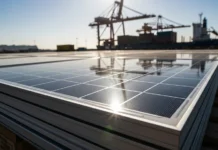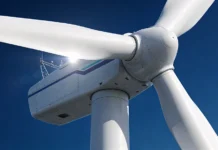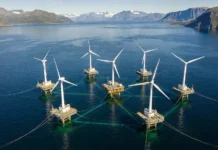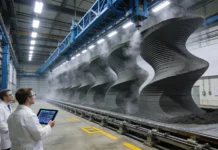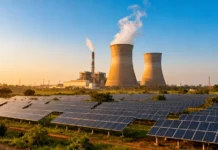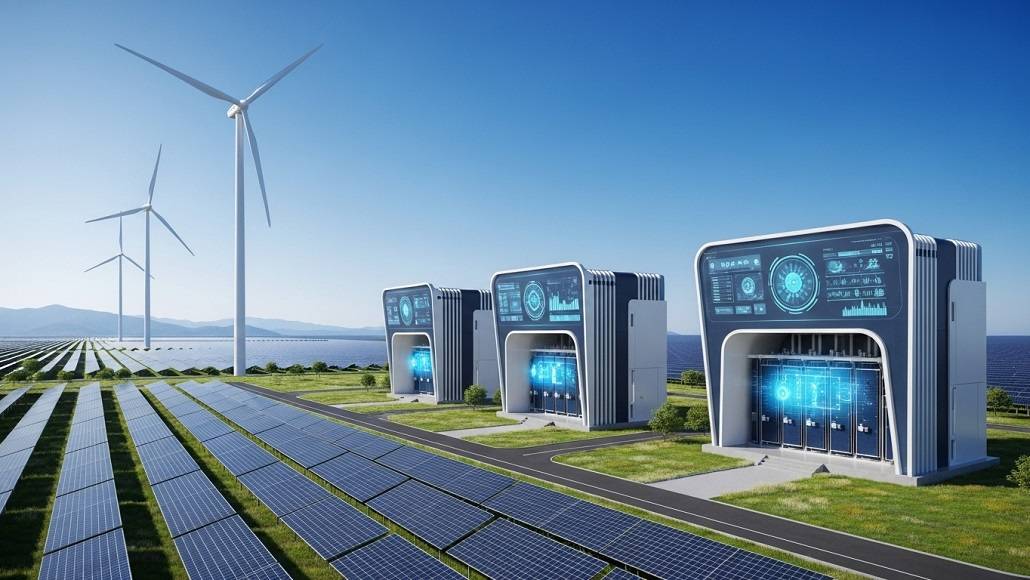Energy firm Wood Mackenzie says that the world will need to spend $1.2 trillion in battery energy storage systems (BESS) over the next ten years to support the installation of 5,900 gigawatts (GW) of new wind and solar power.
The analysis says that worldwide power consumption would rise by 55% by 2034. More than 80% of the extra capacity that will be added will come from variable renewable energy sources.
“Grid-forming battery energy storage represent a critical breakthrough for renewable energy integration,” Robert Liew, Research Director at Wood Mackenzie, said. “As global power demand is projected to surge 55 per cent by 2034, with variable renewable energy comprising over 80 per cent of new capacity additions, GFM BESS provides the technological bridge between renewable abundance and grid stability requirements.”
Grid-forming battery systems are different from standard grid-following systems since they actively help keep voltage and frequency stable. This is important because the percentage of intermittent renewable sources is growing.
The paper says that between 2024 and 2034, the electricity industry would need 1,400 GW more capacity for grid-forming battery systems storage facilities. This deficit shows how important it is to use storage technologies on a broad scale to keep the grid stable.
Wind and solar power currently make up between 46% and 90% of peak demand in a number of Asia-Pacific regions. The paper says that markets with a lot of renewable energy are likely to require grid-forming skills to deal with stability issues.
“Grid-forming BESS provides multiple critical functions for stability including independent voltage source capabilities, high current transient support during disturbances, inertia response similar to conventional power plants, and black start functions,” it said.
The paper used the 2025 Spanish blackout as an illustration of the dangers of having a lot of renewable energy without the right grid-forming technology.
Liew highlighted the Red Sea Project as a case study for grid-forming technology, stating, “As the world’s largest off-grid renewable energy project, it showcases how a utility-scale power system can operate continuously on 100 per cent renewable energy for almost two years.”
Grid-forming capabilities add roughly 15% to the cost of a system, mostly because of better inverters and software. On the other hand, battery prices have dropped by 10% to 40% in countries throughout the world in the last year. The research noted that this has made these kinds of installations more economically viable.
Hybrid utility-scale solar and battery storage systems are now cheaper than onshore wind. By 2040, battery systems are expected to be even cheaper than coal and gas power production in several markets outside the US.
There is also a lot of regulatory support for grid-forming battery technologies. China, the United States, and Australia are among of the countries that have made technical rules to make it easier to use these kinds of systems.
“Increasing clean energy targets, policy developments, and proven pilot projects are accelerating the adoption of grid-forming technology,” Liew added. “With global battery capacity expected to triple by 2035, grid-forming capabilities will likely become a baseline requirement for new storage deployments.”
India, China, Japan, and Vietnam are now handling renewable energy penetration of 46% to 92% of peak demand. This makes them important areas for the early use of grid-forming storage devices.
The paper said that controlling renewable curtailment and making the grid more resilient would be important parts of the energy transformation in these countries.



